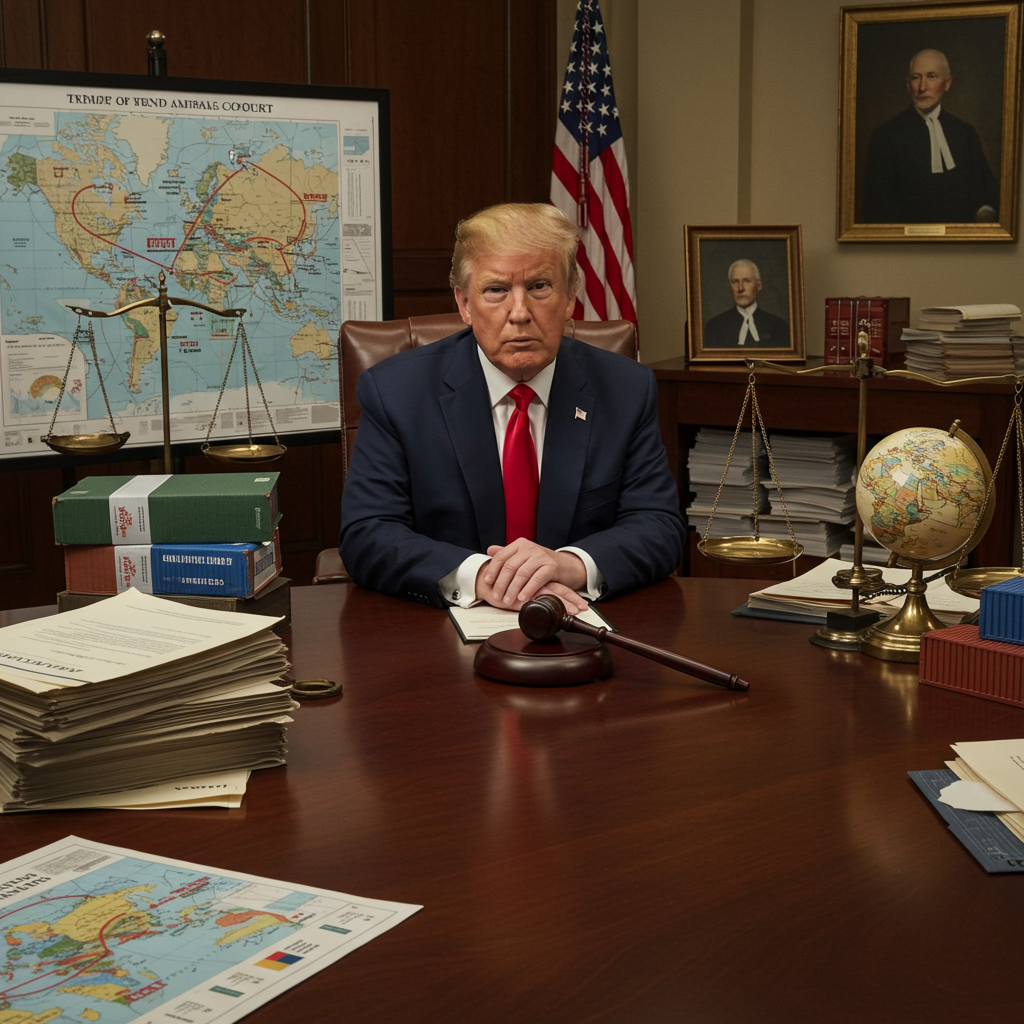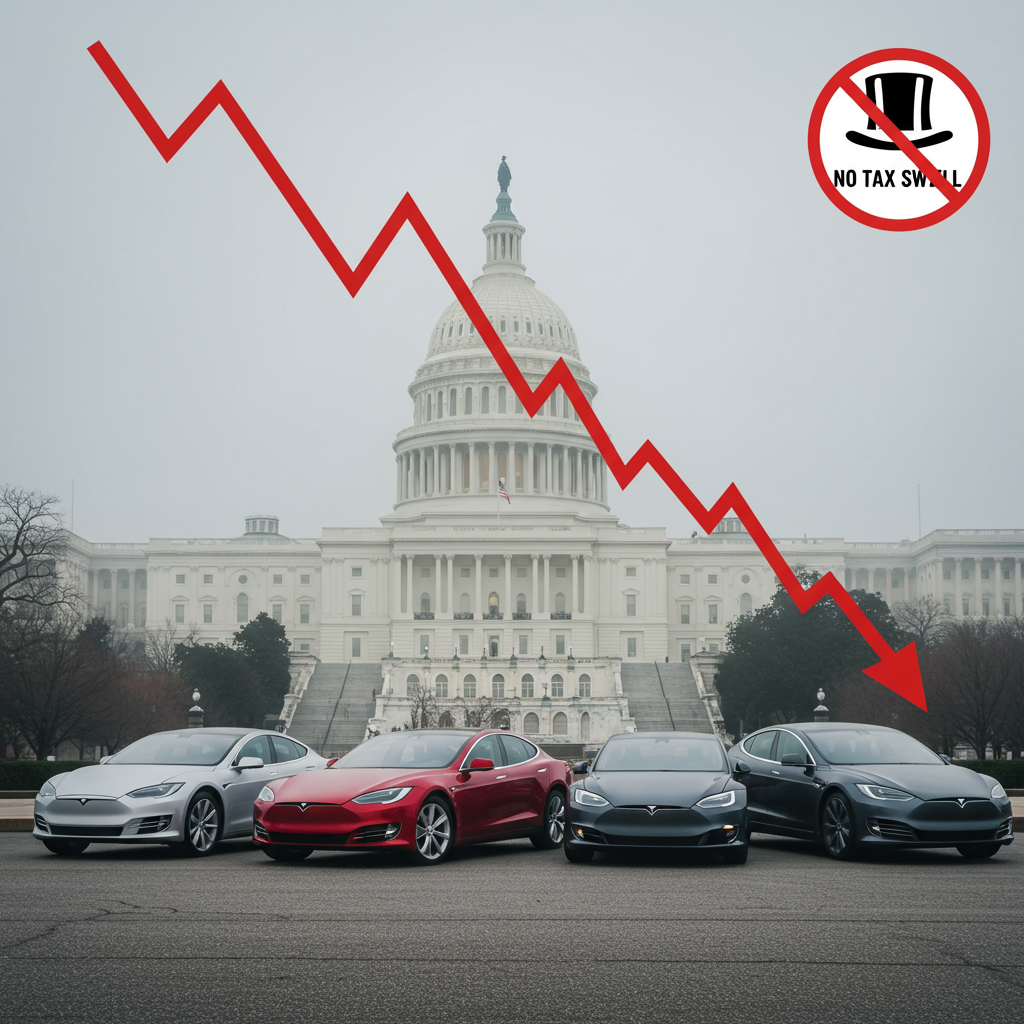Global markets reacted swiftly Friday as the latest trade threat from the Trump administration rattled investor confidence. US stock futures retreated sharply following President Trump’s warning of potentially steep, unilateral tariffs. This development overshadowed recent positive economic signals, including a record-setting week for the S&P 500 index. The move serves as a stark reminder of how quickly political rhetoric can impact financial stability, keeping volatility a key theme for investors navigating the complex economic landscape.
Contracts tied to the benchmark S&P 500 index fell by 0.6% in pre-market trading. This decline came after the index closed the previous trading week at a fresh all-time high. Strong US payroll data released earlier had underscored the economy’s resilience, seemingly setting a positive tone. However, President Trump amplified trade tensions after Thursday’s market close, indicating he might unilaterally impose levies as high as 70% as early as today.
Market Sensitivity to Trade Tensions
This recent market slide highlights an ongoing pattern of sensitivity to evolving trade policy. For much of 2025, markets have grappled with significant volatility, largely fueled by uncertainty surrounding President Trump’s tariff approach. The first quarter of the year, for instance, proved particularly challenging for major US stock indexes. Both the S&P 500 and the tech-heavy Nasdaq Composite experienced their worst quarterly performances since 2022 during this period.
The core issue driving this investor anxiety is the unpredictable scope and impact of potential new tariffs. Threats of broad, reciprocal tariffs targeting “all countries” or even pushing for “bigger” levies dampen market appetite for risk. This strategic ambiguity makes forecasting difficult for businesses and investors alike, leading to hesitant capital deployment and increased caution across sectors. The suddenness of the July 4th threat, coming after positive economic news, exemplifies this disruption.
Real-World Economic Impact of Tariff Uncertainty
The effects of tariff uncertainty extend far beyond trading screens, directly impacting businesses and supply chains. Data earlier in the year from surveys like the Dallas Fed Manufacturing Survey revealed a significant decline in business activity, dropping to levels not seen in years. Commentary from executives pointed directly to tariff concerns as the cause, citing disruptions to supply lines and difficulty predicting future conditions.
Small businesses, in particular, have reported being burdened by these duties, while larger corporations sometimes find carve-outs favoring them. There were also concerns about potential delays in projects and capital spending plans, even worries about future job losses stemming from the unstable trade environment. Even early indicators like shipments at major ports, such as the Port of Los Angeles, showed notable declines compared to the previous year, signaling potential cooling of US economic growth due to trade frictions, which could lead to fewer goods and higher consumer prices.
Investor Flight to Safety
In response to heightened trade war fears and general market uncertainty, investors often shift strategies, seeking refuge in traditional safe-haven assets. This typically involves moving away from sectors considered riskier, such as technology stocks, which have seen significant declines in previous periods of trade stress. Simultaneously, there’s increased demand for assets perceived as safer stores of value.
US Treasurys often see increased buying, driving yields lower. Gold, historically a safe haven, has also surged during periods of intense trade anxiety. Earlier in the year, gold prices reached new highs, surpassing key psychological levels and setting records not seen in decades for quarterly performance. While prices may fluctuate based on daily headlines, analyst forecasts have reflected persistent bullishness on gold, anticipating its value to continue climbing if global economic factors, including trade tensions, pressure traditional markets.
What Investors Are Watching
Beyond the immediate tariff headlines, investors continue to monitor several key economic indicators and corporate developments. Upcoming macroeconomic data releases, such as updates on the Personal Consumer Expenditures (PCE) index – the Federal Reserve’s preferred inflation measure – provide insight into how tariffs might be impacting consumer prices and broader inflation trends. Initial readings of US Gross Domestic Product (GDP) and monthly jobs reports also offer crucial context on the economy’s overall health and resilience amidst trade headwinds.
Furthermore, corporate earnings reports, particularly from major technology companies and other large corporations, are closely scrutinized. These reports offer a micro-level view of how tariff costs, supply chain disruptions, and changes in global demand are affecting company profitability and future outlooks. The interplay between these fundamental economic and corporate data points and the unpredictable nature of trade policy creates a challenging environment for market participants attempting to forecast future movements.
Frequently Asked Questions
Why do new tariffs typically cause stock markets to fall?
New tariffs act as taxes on imported goods, increasing costs for businesses and potentially consumers. This can squeeze corporate profits, disrupt supply chains, reduce consumer spending, and slow economic growth. The uncertainty surrounding which goods will be targeted and the potential for retaliatory tariffs from other countries further destabilizes markets, leading investors to sell stocks and other riskier assets due to increased economic risk and reduced confidence.
How does market uncertainty from trade tensions affect different types of investments?
Trade uncertainty generally causes investors to move away from riskier assets like stocks, particularly those in sectors heavily reliant on global supply chains or exports (like technology or manufacturing). Conversely, demand increases for traditional safe-haven assets such as US Treasury bonds and gold. This shift happens because these assets are perceived as holding their value better during economic downturns or periods of high volatility, offering protection against potential losses in equities.
What key economic indicators should investors watch alongside tariff news?
Alongside monitoring tariff developments, investors should closely follow major economic reports that shed light on the health of the US economy. Key indicators include inflation data (like the PCE index), which shows how tariffs impact prices; Gross Domestic Product (GDP) figures, which measure overall economic growth; and jobs reports, which indicate labor market strength or weakness. Corporate earnings reports are also vital, providing insights into how specific companies are coping with trade-related challenges and costs.
Conclusion
The latest tariff threat from the Trump administration serves as a powerful reminder of trade policy’s significant and immediate impact on global financial markets. Despite positive underlying economic data, the prospect of new, high levies quickly eroded investor confidence, causing US stock futures to slide. This reaction aligns with patterns seen throughout 2025, where trade tensions have repeatedly triggered volatility, prompted shifts towards safe-haven assets, and created real-world challenges for businesses navigating supply chain disruptions and economic uncertainty. As investors look ahead, the ongoing tariff situation, coupled with upcoming economic data and corporate earnings, will likely continue to shape market sentiment and drive investment decisions.



